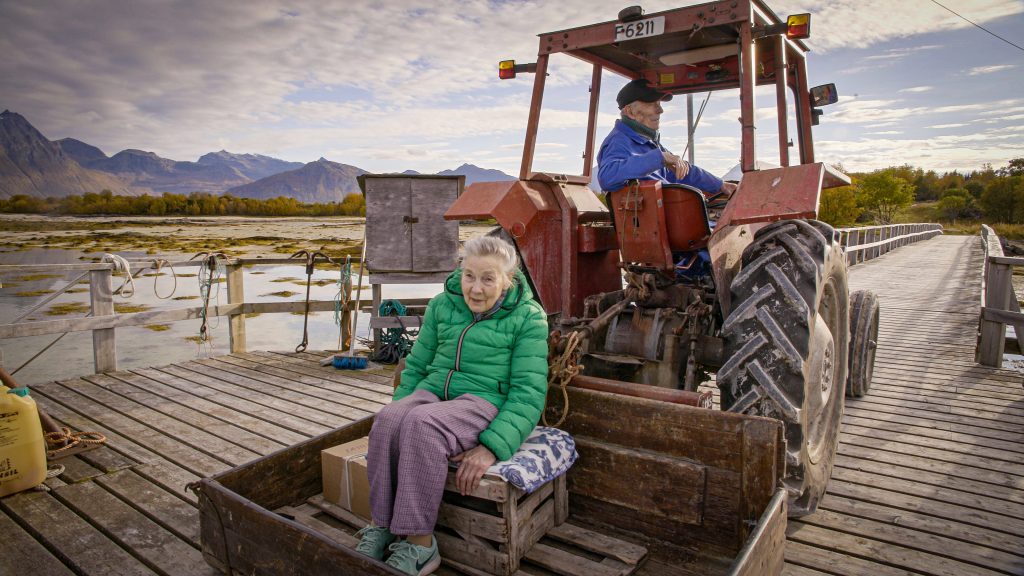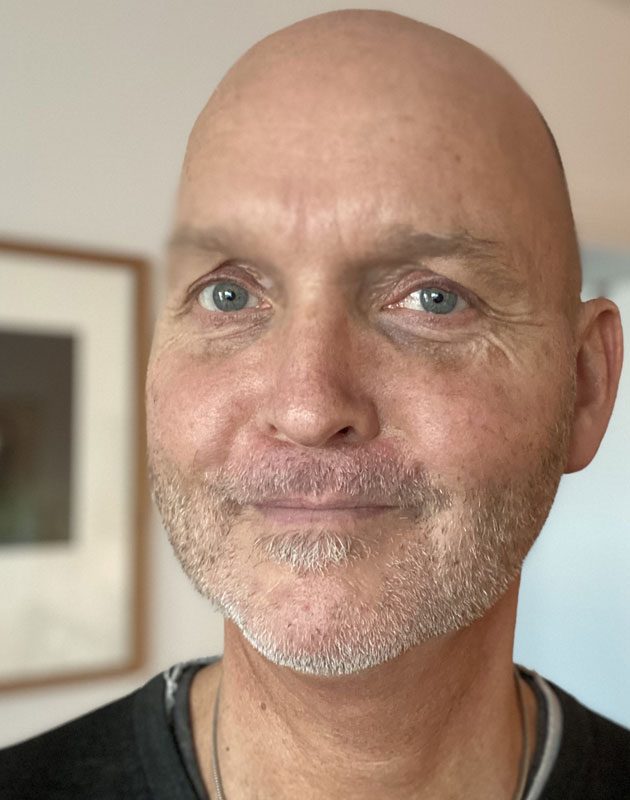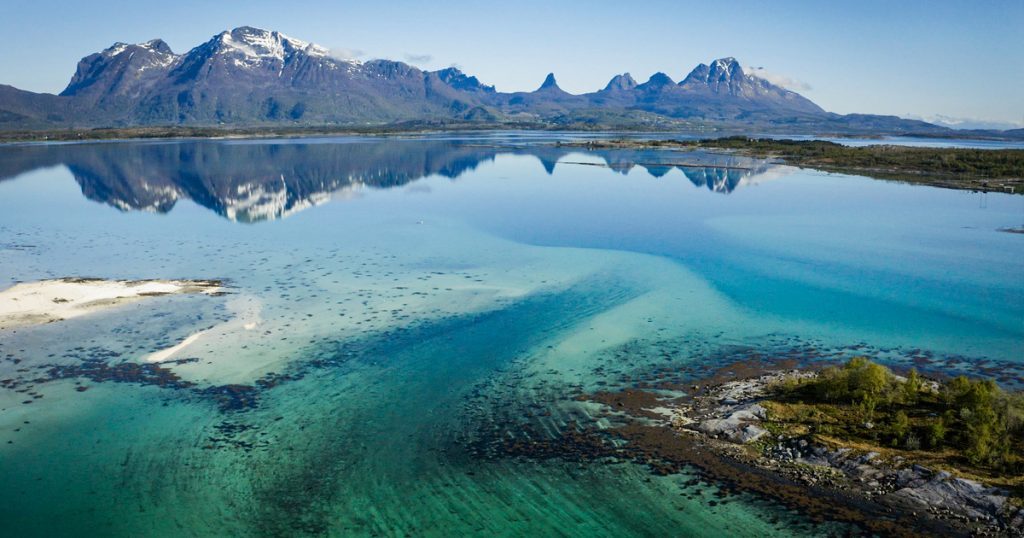When Jesper Petersson is asked to choose a particular type of programme which has played a key role in his almost 20 years at the helm of SVT’s Nordic programme exchange, he is in no doubt about his answer.
“Programmes about taking time out from everyday life, are by far the most popular type that we watch. It’s almost like there is no limit to how many of that type of programme we can include,” he says.
Annual report 2021
This article is part of the overview of the past year of Nordic collaboration.
Two specific formats in particular have been getting the thumbs up from Swedish viewers year after year.
One of those is NRK’s Der ingen skulle tru at nokon kunne bu, now in its 19th season, which features Norwegians who live very simply and in harmony with nature, far from the busy life of town and city.
The other is DR’s Bonderøven (now Frank og Kastaniegaarden) about farmer Frank, living a simple life with his family on a small farm which he maintains using only traditional methods and craftsmanship. Audiences are fascinated by this simplicity, but few would follow in the footsteps of the programmes’ main characters.

“Lots of people dream of a simpler life, but that doesn’t mean that they would want to live that way themselves. Instead, the viewer is a kind of tourist in someone else’s life,” says Jesper Petersson, who describes those two programmes as the strongest by far in his time in programme exchange.
He uses three full weeks at year to preview Nordic TV programmes and typically previews the first and last programme in a series and skips through the rest.
“Of course, you might miss something that way, but it is generally a method that works. In comparison, I have colleagues who buy programmes purely on the basis of the script,” he says.
Following his gut feelings
Jesper Petersson selects programmes according to two very simple criteria.
“My selection is based on experience and on a gut feeling. If a programme really grabs me, I think it will do the same for others. It is the same the other way around, when a programme doesn’t interest me.”
With his many years in the role of previewing, he knows what will engage Swedish viewers.
But recent circumstances, where ordinary flow TV is increasingly replaced by online streaming, have made his job more difficult.
“It’s become harder to be sure what will work. The old rules no longer apply and we need to relearn. The big questions today are about what will work online, why that is, and how we must relate to that when we’re producing, buying and publishing content.”
Jesper Petersson mentions Yle’s popular lifestyle show Strömsö and NRK’s Hva feiler deg? as examples of traditional TV show formats that struggle online.
“It’s good TV, which works well as a traditional broadcast, also on SVT, but it doesn’t draw a large audience online. But that doesn’t actually surprise me,” he says.

Puzzled by the lack of success
What does surprise Jesper Petersson, however, is how certain productions which were successful online in their country of origin have not had similar success at SVT.
Prinsesserne fra blokken and other DR3 programmes have certainly been an online success in Denmark, but that success couldn’t be carried across to SVT. We have to ask ourselves why that is? Is it a question of content or subject matter, is it about language and tonality, or is it about the way we have published this content and what exposure we have given it? We still have a lot to learn in that respect.
My selection is based on experience and on a gut feeling
Jesper Petersson, SVT
“When it comes to the shows I filter out in my selection process, those may be programmes with a real focus on local issues. And the same goes for shows that are carried by one person who is very well known at home, but unknown in the rest of the Nordic region.
For example, Jesper Petersson mentions the Danish stand-up comedian Jan Gintberg and his show, Gintberg på kanten.
Sometimes it works anyway, Jesper Petersson reflects.
Mest utvekslede programmer i 2021
- Min Superhund, DR
- De skjulte talenter – 5 år senere, DR
- Fordi du er kvinde, DR
- Monsen, Monsen og Mattis, NRK
- Valpeskolen, NRK
- Lives oppdragelsesreise, NRK
- Barnmorskorna, SVT
- Du Clarar mer än du tror, SVT
- I klimatets spår, SVT
- Strandir, RUV
- Þegiðu og syntu! (Shut Up and Swim!), RUV
- Min Hobby, Yle
- Strömsö, Yle
- Närmat i Åboland, Yle
“You might put it this way, that in order for it to work then the element of universal human interest has to exceed the celebrity factor.”
Language can also be a factor. “The language show Eides språksjov from NRK is spiritual and entertaining, but difficult for a Swedish audience to relate to, and apart from that it’s impossible to translate into Swedish.”
A growing partnership
Following several years of programme exchanges reaching record numbers, they have dropped from 2,468 episodes to around 1,600 episodes over the last five years. However, the Nordic partnership has been strengthened during that period, in that the trend has been quite the opposite for Nordvision’s other cornerstone. That is to say, its co-productions, where the partners make financial contributions to each other’s programme production and in some cases cooperate across borders to produce the content.
Jesper Petersson believes there are some natural explanations for why the programme exchange has reduced.

“I don’t think it’s a sign of dwindling interest, but rather the fact that we produce and publish our programmes in new ways. It could also be a question of rights. Another contributing factor has been the huge cuts made at DR in 2018, where many of the programmes previously exchanged were then discontinued, says SVT’s acquisitions lead. Today, he spends less time previewing programmes, simply because there are fewer programmes around, he says.
SVT along with Finnish Yle are the two partners who exchange the most. That is because there is a large Finnish-speaking minority of half a million people in Sweden and a Swedish minority of five percent of the population of Finland.
“In that respect the exchange offers a fantastic opportunity for us,” he says.
While Jesper Petersson has no immediate idea of why joint productions are seeing such significant growth, he is certainly pleased.
“The important thing is that the partnership itself remains strong, and then it’s less important what forms that might take.
After all, everyone wants drama that works best online, and N12 is fantastic at that. The fact that the collaboration is growing, as far as I’m concerned that’s something really, really positive.”






